The MICHELIN Guide Inspectors are constantly sharpening their forks and scouting for standout dining experiences.
In December 2025, their tastings led to 10 restaurants joining The MICHELIN Guide Osaka, ahead of the official ceremonies when the MICHELIN Stars and Bib Gourmands will be unveiled.
These newly added restaurants appear on our official website and are highlighted with a “New” symbol to make them easy to spot. From Japanese cuisine served in a modern Sukiya-style structure to Chinese cuisine starring Japan’s famous wagyu beef, here is a first taste of what to expect.
Osaka
Hachi
JapaneseThe chef balances originality with respect for tradition. Sashimi showcases precise knife work, while generous amounts of seasonal ingredients are grilled over bincho charcoal, a dense Japanese white charcoal known for its clean steady heat.
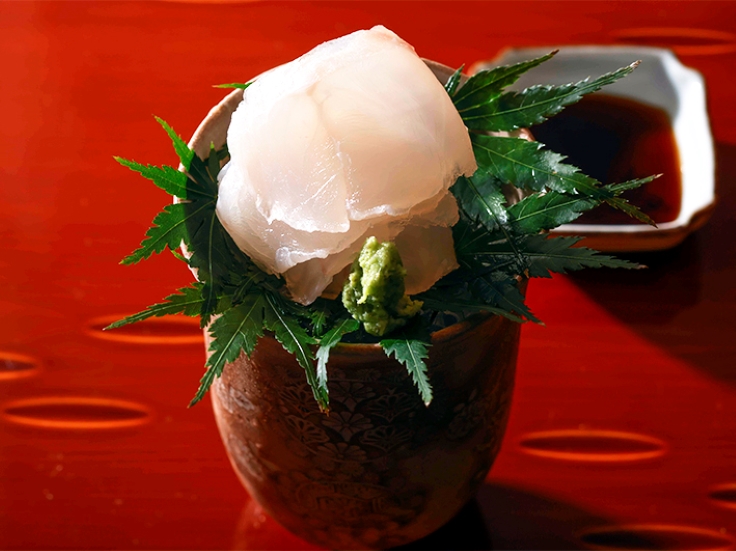
Wagyuchugokusai Kumanohanare
ChineseAt this Chinese restaurant, Japan’s famous wagyu beef is the star. Japanese and Western influences shape a new style of Chinese cooking that feels distinctly its own.
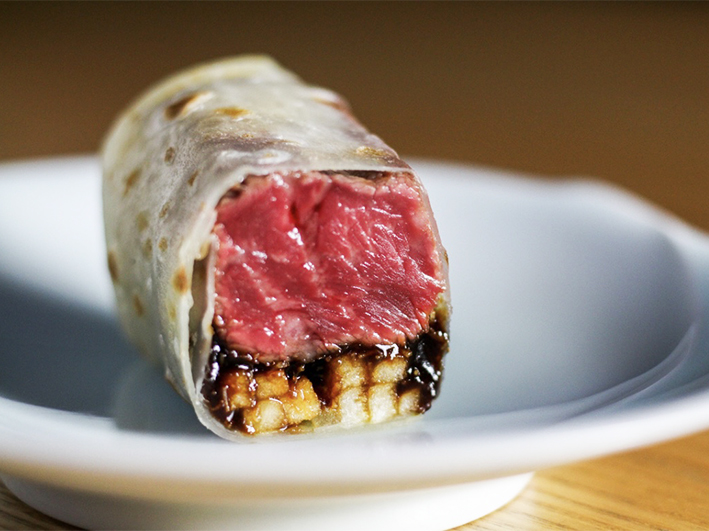
Teppanyaki WAJO
TeppanyakiAppetizers showcase modern creations built around the seasons. A soy and red wine sauce pushes the wagyu steak into deeper, more layered flavor.
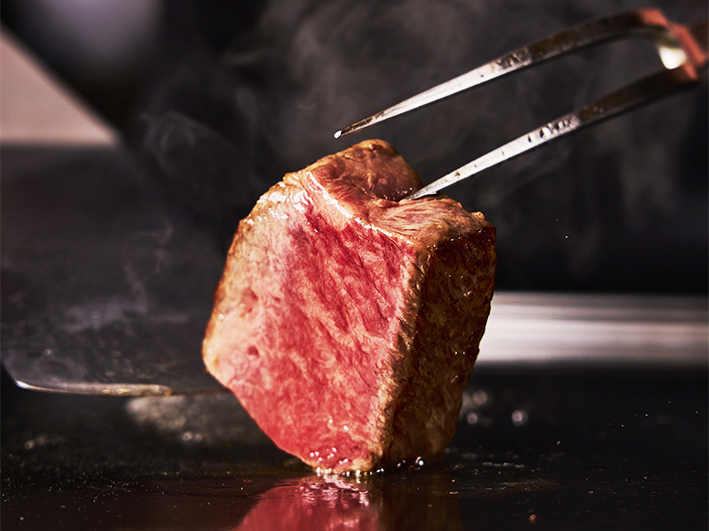
Sushi Takumi
SushiTuna, a must-have for nigirizushi, is sourced from the only wholesaler the chef trusted when he went independent. His technique is strengthened by a custom knife set he ordered from a store in his native Fukui.
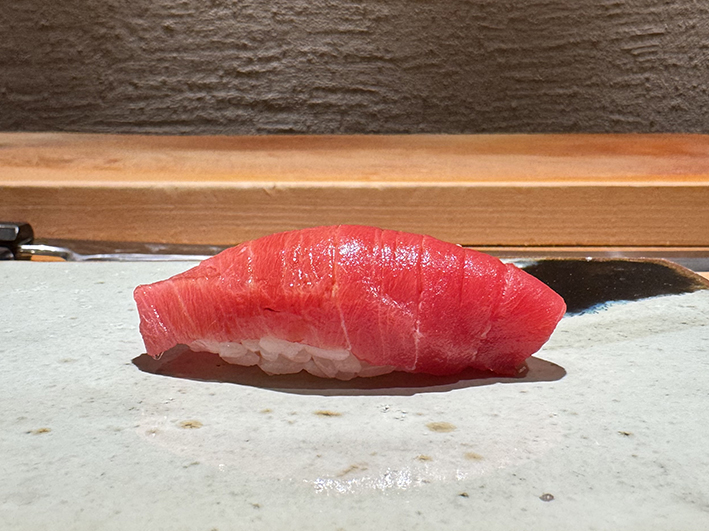
Sumibi Iwata
YakitoriLocally raised chickens from Kagoshima are shipped directly to the restaurant and grilled over bincho charcoal, a traditional Japanese hardwood charcoal usually made from ubame oak. The appetizer for the prix fixe menu is lightly seared chicken thigh. Yakitori is usually salted to highlight the quality of the meat.

Osteria Ottanta Sette
ItalianThe couple behind this osteria used to run one in Italy and now serve both Lombardy wines and cuisine in their Osaka restaurant. Dishes are faithful to tradition, with risotto made with Carnaroli rice and pasta served al dente.
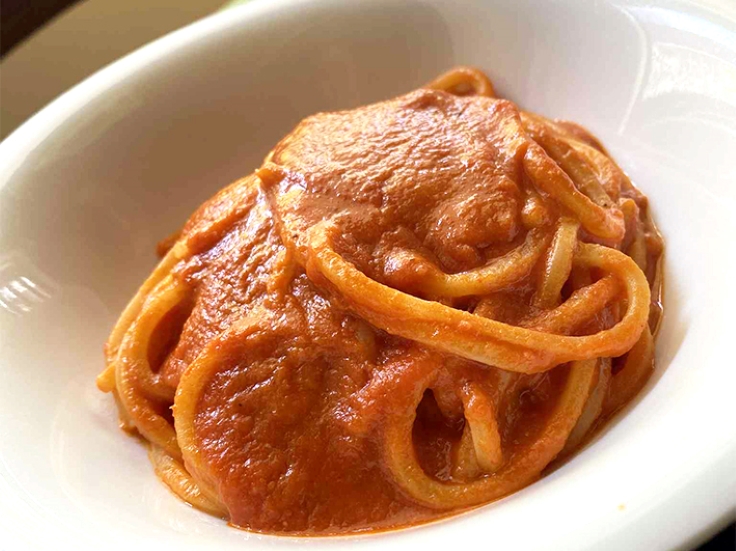
Sushi Shigenaga
SushiMost fish on the menu is shipped from Kitakyushu, though some are sourced at the Tsuruhashi and Kuromon markets. Fatty tuna sushi is lightly salted to enhance its flavor. Even the rolled omelet reflects the skill of the sushi artisan.
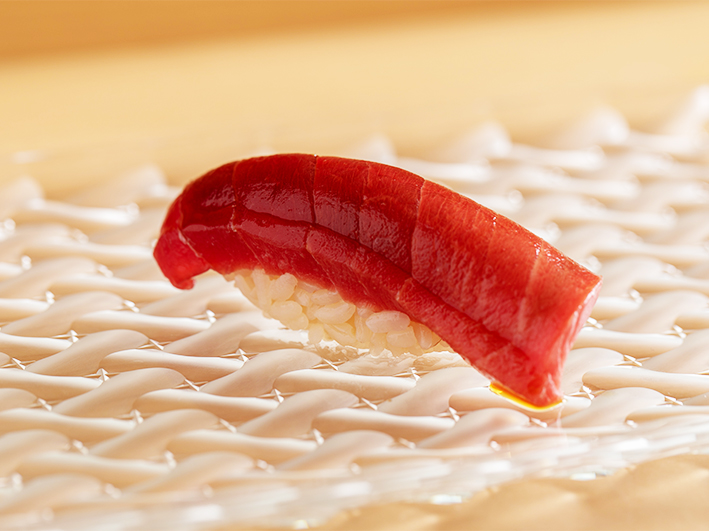
Naniwaryori Satou
JapaneseThe chef’s signature dish, inherited from his mentor along with cherished serving bowls, is Tenjin Kobai Mushi: a savory egg custard made with dried-plum broth and finished with a delicate plum glaze.

Sumisho Mikuriya
YakitoriOne of the chef’s guiding principles is that careful flame control can produce impressive results even with lower-grade chicken. For this reason, he uses broiler chickens for neck and heart meat, with impressive results.

Kushikatsu Daibon
KushiageA devoted lover of fish, the chef makes seafood the star of his kushikatsu prix fixe. His tiger prawn, a menu staple, is fried rare to highlight its natural sweetness.
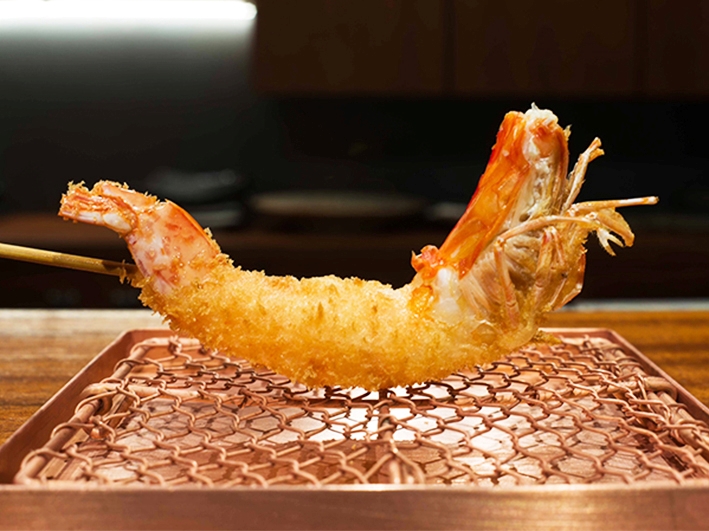
November 2025
Kyoto
Rakuhoku Nakayama
JapaneseAn omakase Japanese restaurant noted for its tempura, which is delicately fried in cottonseed oil for a light finish.
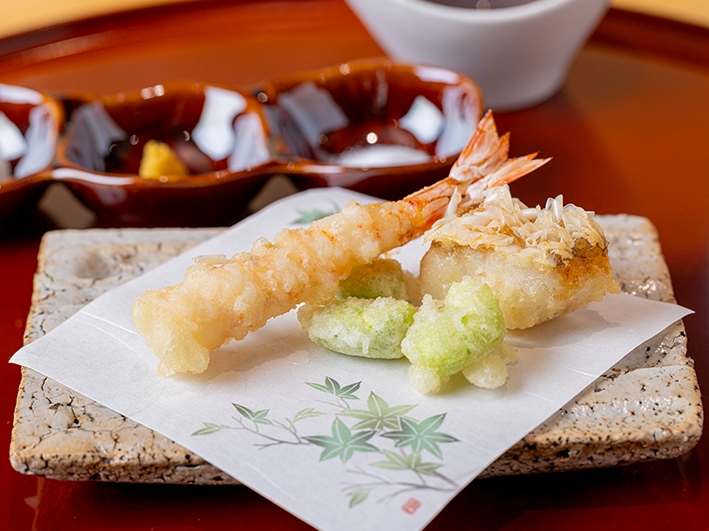
Sakaimachi Kamokura
JapaneseThe menu is written in the owner's own hand, in light, supple brush strokes. Seasonal flavors are prepared to taste — grilled, steamed or deep-fried.
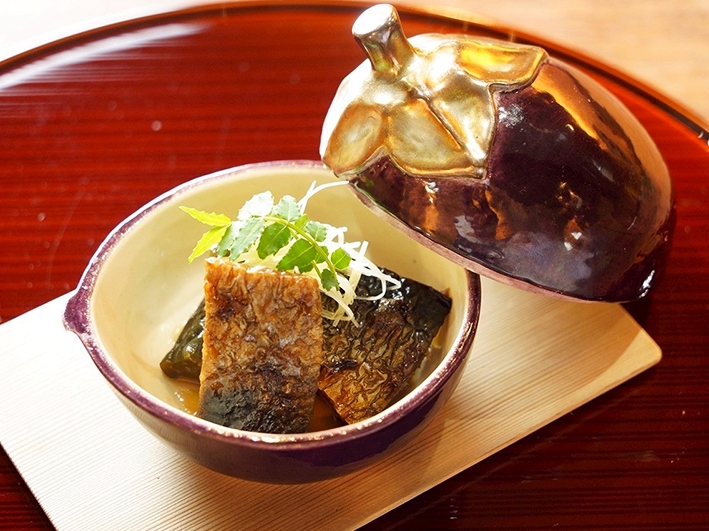
wavie
FrenchWavie (pronounced “wah-vee”) is an invented word combining Japanese wa, meaning “harmony”, with French vie, meaning “life”, depicting French cuisine revived through Japanese ingredients. The prix fixe menu is squarely focused on the ingredients of Kyoto and its surroundings.

ima
FrenchIma means “now”, inviting you to live in the moment. Every dish is imbued with the magic of wood smoke; all focus trained on the moment when the flavor of the ingredients bursts to life.

måne
ItalianGuided by instinct and experience, the chef endeavors to bring originality to his cuisine, layering the sweet and sour of fruit with the aromas of spices and herbs.

Konno
JapaneseThe chef makes the extra effort to bring his guests the aroma and flavor of fresh-from-the-kitchen goodness. The preparation area is adjacent to the fry stations, minimizing the distance food has to travel.
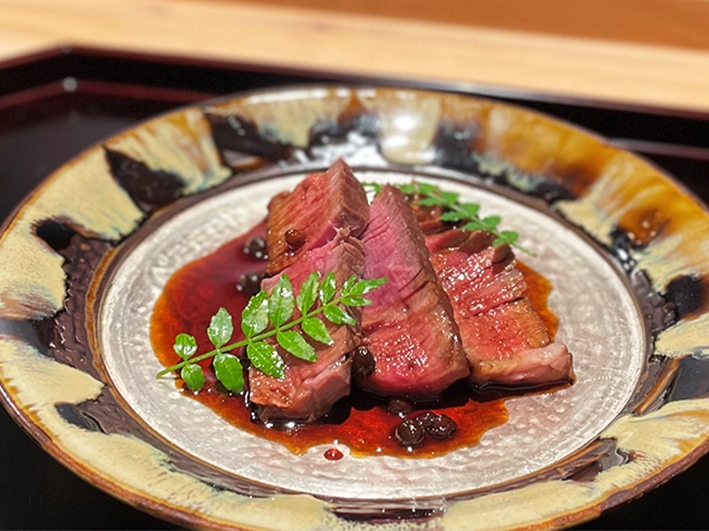
Osaka
Shuko Osaka Manpukudou
JapaneseTrue to its name, which refers to shuko — small appetizers traditionally served with sake — the omakase menu features a series of refined, delicately prepared dishes. Warm, attentive service completes the relaxed atmosphere.

MATO
ChineseThe prix fixe menu features traditional fare from various regions of China, assembled with a balanced diet in mind. Seasonal Japanese ingredients are incorporated in dishes with a modern touch.
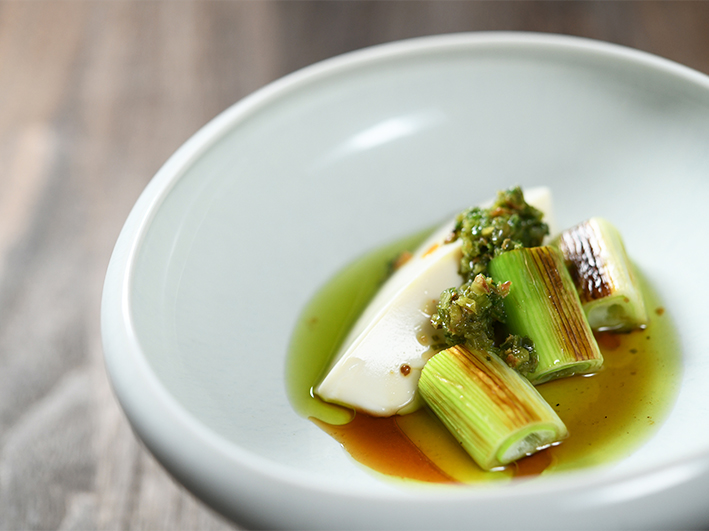
Chukashunsai Morimoto
ChineseA popular appetizer is the Sichuan-style chicken. Dim sum items like steamed gyoza and pork shumai showcase the chef’s training in Hong Kong and Guangzhou.
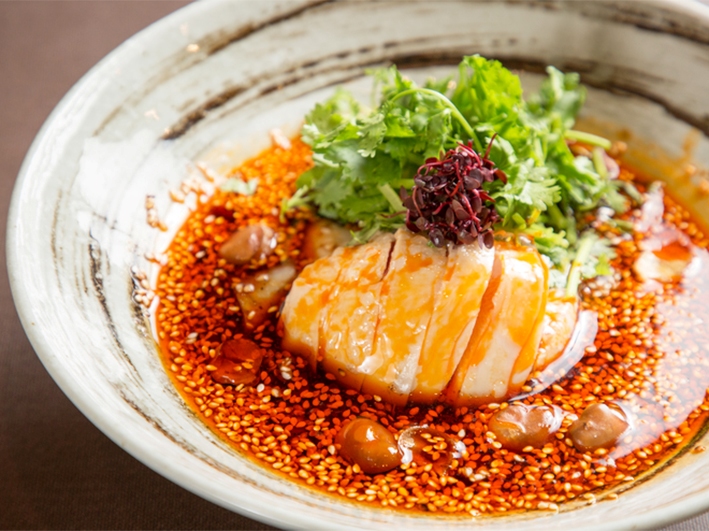
Nishideria
ItalianInterpreting Italian cooking techniques through Kansai ingredients creates a cuisine found only here. Zeppole alla Osacano combines a Neapolitan pastry of deep-fried dough with an Osaka takoyaki (octopus balls in savory batter).
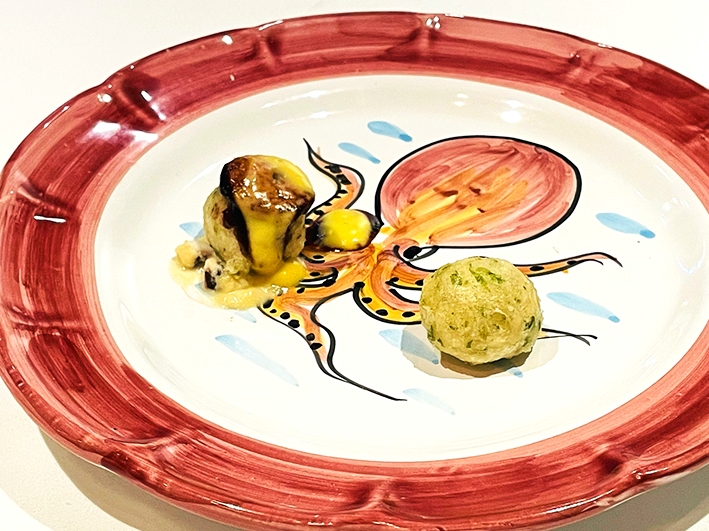
DIVA
FrenchCountertop French dining by a single skilled chef. Old-school French cuisine that proudly upholds tradition with classic technique and bold flair.
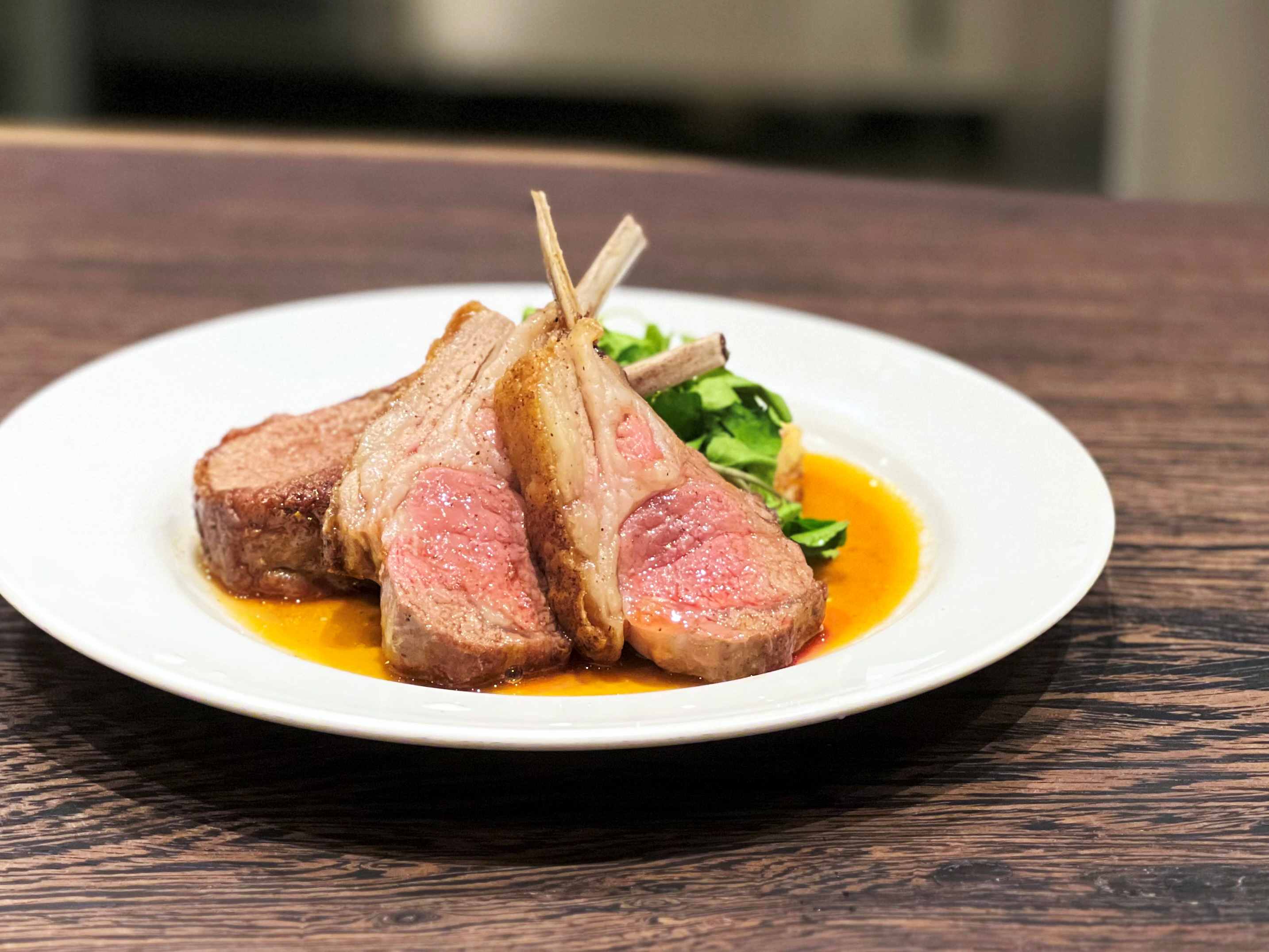
Óptimo
SpanishFavorites here include a richly flavored gratin of crab and callos, which is a stew of simmered honeycomb tripe and beans. Rice dishes simmered in a savory broth, such as arroz meloso and arroz caldoso, are also crowd-pleasers.
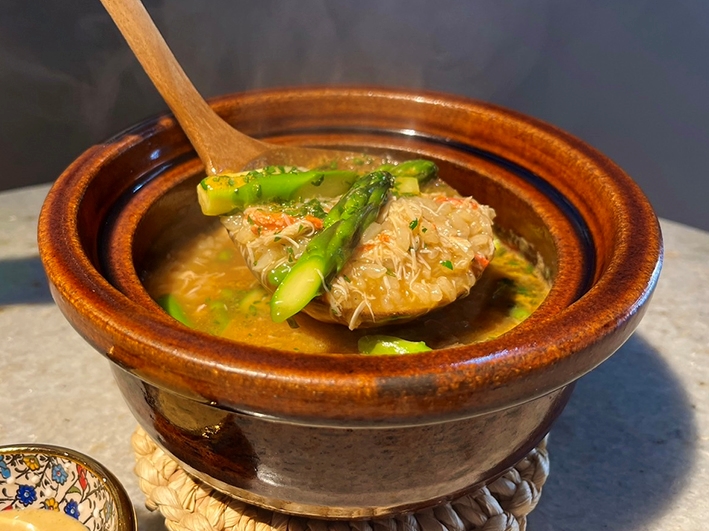
October 2025
Kyoto
KOGA
FrenchThe chef prizes “combinations of flavors and aromas.” His philosophy comes to life in the warm salad, where vegetables from Kyoto’s Takagamine district are prepared in different ways to bring out each ingredient’s character.
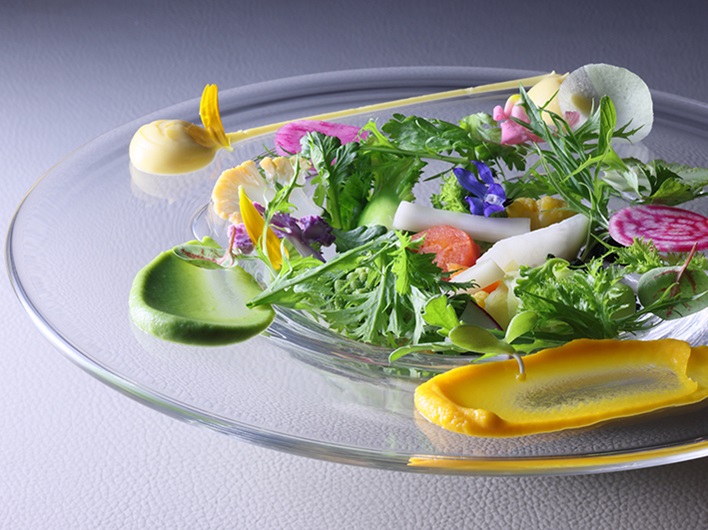
sushi imagine
SushiA one-man kitchen, the chef channels his passion into every detail of the sushi. From start to finish, his dedication to showcasing fish at their seasonal peak shines through.
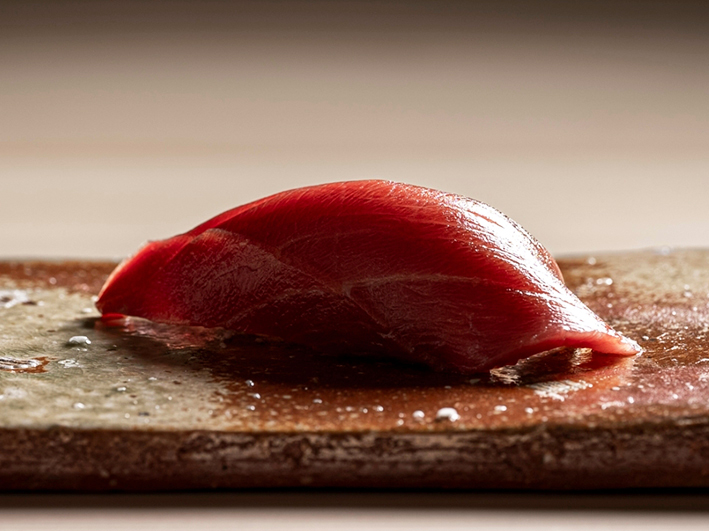
wabiya
YakitoriThe charcoal grill and the wood-fired oven in the center of the open kitchen immediately catch the eye. While various cuts are chargrilled on skewers, joints of meat are patiently roasted over a wood flame.
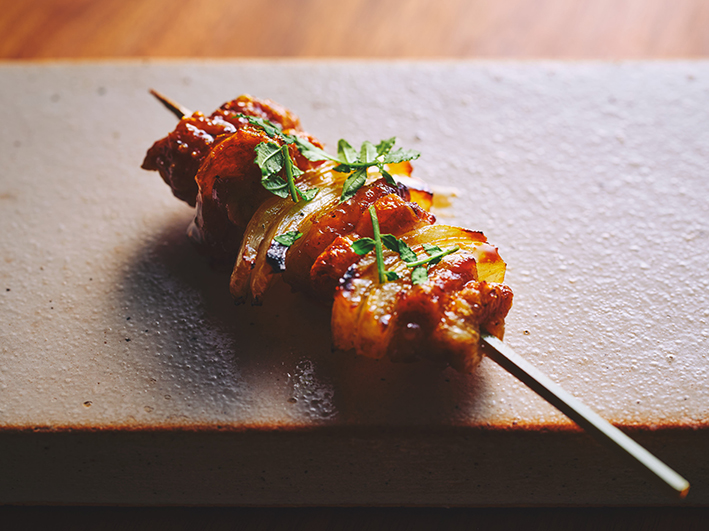
Hanhan
JapaneseAfter training in kappo (a chef-led, counter-style form of Japanese cuisine) and sushi, the chef began exploring new expressions of meat dishes, replacing kaiseki fish courses with beef, pork, chicken and other meats.

Ryoriya EN
JapaneseThe shop curtain emblazoned with a bold, circular brushstroke draws the eye. Believing that cooking reflects the chef’s character, the restaurant strives to build a genuine connection with its guests.
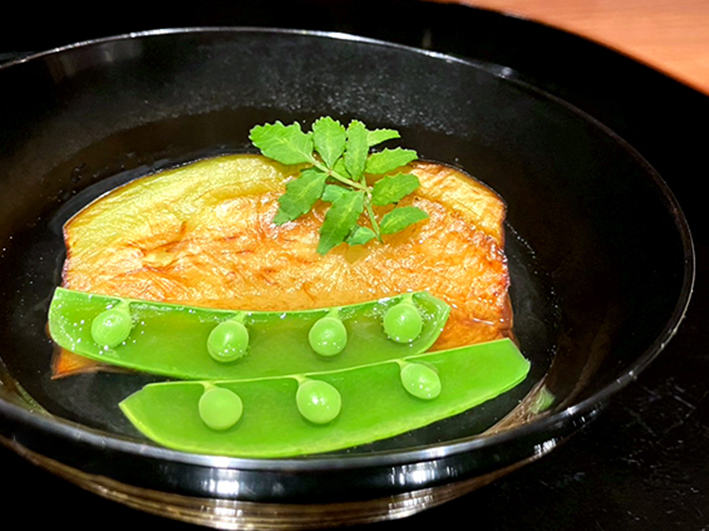
Fuyacho Kuraku
IzakayaFish from Wakasa Bay in the chef’s native Fukui Prefecture is a source of pride. Sake from Fukui is also featured, sharing the appeal of the Echizen and Wakasa regions.

Osaka
Brasserie RÉGINE
FrenchClassic techniques meet simple, modern décor, while a deep respect for French tradition is reflected in the focus on quality ingredients. The outdoor terraces provide a natural extension of the dining room, inviting guests to linger in the open air.

JIANG NAN CHUN
ChineseHonoring yum cha tradition (the Cantonese custom of enjoying tea with dumplings), dim sum is served only at lunchtime. Seasonal dishes are offered on a prix fixe menu, each crafted with care. From its high-floor perch, the restaurant — located inside the Four Seasons Hotel Osaka — offers sweeping views of the Osaka cityscape.

Empathie
FrenchThe restaurant aims to leave a lasting impression through every bite. At the counter, the chef presents each dish personally, letting its message speak directly to each guest.

Oryori Nonohara
JapaneseThe restaurant weaves the culture and traditional ceremonies of Japan into its menu. Sweets include umegae mochi (grilled rice cakes filled with red bean paste) from Dazaifu Tenmangu Shrine in Fukuoka. Tea from the Yame area of Fukuoka is served in homage to the chef’s hometown.

bistrot neuf
FrenchThe menu features classics such as oeufs mayonnaise (eggs with mayonnaise), pâté de campagne (country-style pâté) and beef cheek braised in red wine. Drawing on his background in Italian cuisine, the chef also includes handmade pasta dishes.

isolata
ItalianHaving trained in various regions of Italy, the chef shows deep respect for local traditions. Adapting his techniques to the rhythm of each season, he brings a modern sensibility to classic Italian cooking

July 2025
Tokyo
Akasaka Kappo Washi
JapaneseThe restaurant has a particular fondness for Japan-raised ostrich meat and exploring new flavors through preparations such as mincing, slow simmering in soy and ginger and charcoal-grilling.

La Maison Confortable
FrenchYosuke Akasaka studied for years under Pierre Gagnaire. From this legend of the French culinary world, Akasaka inherited the avant-garde sensibility that inspires his creativity.

Hakozakicho Sumito
SushiFrom fatty toro wrapped in nori to nigiri showcasing lean akami, medium-fatty chutoro and rich, melt-in-the-mouth otoro, the temperature of the sushi rice is subtly adjusted to suit each topping. These delicate inflections highlight the true flavor of each ingredient, bringing their essence to the fore.

ZUPPERIA OSTERIA PITIGLIANO
ItalianHonest flavors and presentations mirror the food culture of the Italian countryside, championing simple handmade pasta and chargrilled fish and meat. Scenes of diners sharing from a single plate are a reflection of everyday life in Italy.

Kanshin
JapaneseThe meal begins with a selection of smaller dishes, after which guests select à la carte options from the menu, for a personal take on multi-course ryotei preparations.

Aramaki
YakitoriEach cut of chicken is carefully selected based on specific regions and premium breeds. To create a gradual progression from light to rich flavors, yakitori is seasoned with salt in the first half of the meal and with sauce in the latter half.

Biriyani Osawa
IndianThe restaurant serves only biryani dishes, primarily mutton or chicken. Oil is used sparingly, enhancing the umami of the ingredients and the flavor of the spices.

Mitsui
SushiA traditional stove mounted in the kitchen gives diners a view of the chef’s handiwork with a charcoal brazier and a broad-brimmed pot for cooking rice. Nigirizushi hews close to tradition, with white-fleshed fish, tuna, gizzard shad, shrimp, sea urchin and conger eel forming the core lineup.

Fiocchi
ItalianLamb wrapped in straw — a dish rooted in Waldensian communities of Piemonte — is served with potatoes baked in ash to draw out sweetness.

Kushiage Ryori Kawata
KushiageOnly light, plant-based oils are used, and frying is at high temperatures to ensure minimal residual oil. Tiger prawns, soft-boiled quail eggs and pork shoulder roast are standard fare.

Fujisushi
SushiIn testament to the chef’s uncompromising standards, a curated selection of small dishes is offered, accompanied by sake to be savored at leisure. Aiming to gain recognition overseas, the shop takes its name from Japan’s most famous mountain, reflecting its ambition to bring quality sushi to a wider audience.

L'ALCHIMIA ASTRATTA
ItalianDrawing on his experience in Emilia-Romagna, a region renowned for pasta, the chef flexes his gastronomic muscles with fresh varieties such as tortelli and tagliolini.

Sobakappo Nagano
SobaSoba comes in two varieties: seiro soba, served on a wickerwork tray, or coarse-ground soba. Combination platters feature an impressive variety of small dishes designed to complement sake, including simmered herring in sweet soy sauce and marinated grilled shrimp.
Koshita
JapaneseThe counter, made of ancient, buried cedar, was passed down from the chef’s respected mentor and serves as a meaningful symbol in the restaurant. Building on the techniques honed during his apprenticeship, the chef creates unique combinations of ingredients and methods, putting a personal stamp on his craft.

June 2025
Tokyo
ess.
ItalianStaff provide attentive service, ensuring guests can enjoy delicious items whenever they choose, without hesitation. The name “ess.” is short for “essential,” a reflection of the must-have dining experience the restaurant aims to deliver.

Ginza Sushi Ichidai Yugo
SushiLocated in Ginza, not far from the Kabukiza Theatre, the restaurant is marked by a white sign framed in ebony. The long, slender shape of the sushi adds satisfying substance to each piece. A lunchtime favorite is the barachirashi — sushi rice mixed and topped with fresh ingredients.

Loiseau de France
FrenchInside Institut Français de Tokyo, time flows slowly, the bustle of the city forgotten. Poached eggs in red wine sauce and beef simmered in red wine offer an authentic taste of Saulieu, in Burgundy’s Côte d’Or.

Tempura Kitagawa
TempuraThe chef taught himself tempura by traveling and sampling a variety of regional styles. His keen eye for selecting fish derives from his experience as a sushi chef. Lightness and freedom are the guiding principles behind his cooking. The largehead hairtail, also known as scabbard fish, is an unusual yet inspired choice.

TACUBO Shirokanedai
ItalianThe guests assemble around a single, long table to celebrate the convivial joy of Italian dining. The simple yet refined appetizers, pasta and wood-grilled meat dishes are meant to be shared.

Sushidokoro Shishi
SushiService follows an omakase prix fixe format, featuring a generous selection of items. Tuna, from an esteemed wholesaler, is a special point of pride, with three pieces served consecutively.

Shinrakuki
ChineseWe recommend starting with Cantonese flame-broiled dishes. Pork and duck are sweetened with honey or malt sugar and seasoned with soy sauce or Chinese five-spice powder, concentrating the umami as the meat broils.

Teuchisoba Jiyusan
SobaAppetisers set the tone — such as miso-marinated grilled shrimp or herring fillet simmered slowly over several days. Delicately thin seiro soba, made purely from buckwheat and served on a wicker tray, offers a satisfying finish. For a deeper, more rustic flavor, inaka soba is stone-ground by hand, one grain at a time using a pestle and mortar.
Yugetsu
IzakayaThe menu is written in the chef’s own flowing brush hand, adding a personal touch to the experience. Each item features a touch of ingenuity, with flavors designed to keep the sake flowing. Artisan-crafted dining and drinking vessels further elevate the enjoyment of each course.

Shutei Tanaka
YakitoriA standout performance in yakitori, this restaurant is run by two brothers, both hailing from other disciplines of Japanese cuisine. Chicken skewers are primarily served salted, allowing the flavor of the locally raised chicken to shine. Precisely cut snacks and expertly prepared yakitori pair effortlessly with sake, making for a smooth and satisfying experience.

May 2025
Tokyo
Yd’or
FrenchDishes at Yd’or are served hot and fresh, whisked from kitchen counter to table the moment they are complete. The chef’s passion is palpable as he shares stories from his culinary journey while explaining each dish.

Chiso Takayama
JapaneseThe fare at Chiso Takayama expresses the bounty of Japan’s seasons, connecting it deeply with the natural world. That spirit dovetails with the tea ceremony’s concept of the once-in-a-lifetime encounter.

NANAHIRO
ContemporaryThe concept is “Japanese cuisine plus,” with dishes that reflect the chef’s background in both Japanese and Western cooking, blending elements of each tradition. Only the ingredients are listed on the menu, heightening anticipation and adding an element of surprise when the food arrives.

Yaesu Unagi Hashimoto
Freshwater EelAn old wooden sign catches the eye: “Unagi – Eat this, and there is no need for medicine.” This reflects the founder’s belief in eel as a nourishing food. The fourth-generation chef honors tradition while adapting to the present. In step with the times, a counter seat offers a view of the craftsmen at work.

Ristorante Angelo
ItalianThe restaurant's name, meaning “angel,” was inspired by an Osaka eatery whose influence continues to guide the chef each day. He sources his ingredients from within the Kansai area with which he is familiar.

Hyakuyaku by Tokuyamazushi
JapaneseA Shiga-born chef with deep expertise in fermentation oversees the cuisine, weaving its rich umami into the kaiseki (seasonal, multi-course) experience while honoring ancient culinary traditions. A staple of the menu is funazushi fermented fish, a local specialty in Omi.

La Gloire
FrenchThe chef adds a modern twist of his own to every dish, blending classic influences with contemporary elements. The international wine pairings further reflect his modern sensibility.

Sassa
JapaneseSassa presents kaiseki prepared with a sushi chef’s sensibility. In a unique interpretation, tuna is thinly sliced to complement the light soy sauce. Bursting with the chef’s passion and ambition to innovate, Sassa is pushing Japanese cuisine forward.

Unagi Tokito
Freshwater EelUnagi Tokito offers a fresh take on a culinary tradition passed down through generations. Kabayaki — eel dipped in soy-based sauce and grilled — is served in a bun like a hamburger. Eel simmered in wine, meanwhile, is a nod to French cuisine.

Gigio
ItalianA trattoria where à la carte dining is encouraged with a comprehensive menu of regional cuisines. Pici served with tomato ragú and vegetable sformato are all flavours learned in the Italian countryside.

April 2025
Tokyo
MANOIR
FrenchIndulge in fresh, light cuisine and French wine at MANOIR. The chef focuses on crafting light French dishes that highlight the delicate balance of sweet and tart fruit flavours, elevated by the depth of umami from fermentation and salt-pickling.

NISHIAZABU SHANGU
ChineseExperience the charms of Cantonese cuisine through theatre-style dining at NISHIAZABU SHANGU. The chef leads his team with precision, wielding the wok with masterful finesse. Celebrating the essence of Cantonese cooking anchored in seafood and dried delicacies, the menu features premium ingredients such as spiny lobster, abalone, dried scallop abductor and dried mushrooms.

KHAO
ThaiAt KHAO, the vibrant spirit of Thai cuisine is reimagined through the use of Japanese ingredients. A chopped mix of pomelo and seafood draws from royal court traditions, while rice vermicelli yakisoba is inspired by Bangkok street food. Regional Thai dishes are recreated using house-made fermented and aged seasonings. KHAO reflects a strong sense of curiosity and dedication to Thai culinary culture.

Kandanishikicho Sushi Takaharu
SushiKandanishikicho Sushi Takaharu presents an omakase that seamlessly blends innovation with tradition. Alongside classic sushi, prepared through time-honoured methods such as brining, marinating and simmering, the menu also features deep-fried items, adding a unique dimension not typically seen in sushi dining.

Motoazabu Kushima
JapaneseOmakase set menus are woven from Japanese Black wagyu beef and seasonal cuisine. The chef sources his beef from Miyazaki to showcase his home region. A creative and unrestrained menu delivers both delight and fulfilment.

Tempura Aratamikawa
TempuraExperience a new take on tempura at Tempura Aratamikawa. Tempura pieces, such as the classic Edomae staples of shrimp, sillago and conger eel, are prepared in a way that feels closer to grilling than deep-frying, resulting in a uniquely light and refined texture.

FUSOU
ContemporaryFUSOU serves up speciality aged Wagyu beef rooted in French culinary techniques. FUSOU’s chef travelled far and wide across Japan uncovering regional gems that highlight the best of Japanese produce. At the end of each meal, a hamburger is served in a playful and memorable twist.

Shokudo Wata
IzakayaShokudo Wata is an izakaya-style eatery that complements everyday life. In the unassuming interior, one dish follows another, each prepared with painstaking attention to detail. Maybe this is the meaning of luxury within the everyday. It's a delicious reminder that true luxury can be found in life’s simple moments.

February 2025
Tokyo
EWIG
AsturianTerrine of foie gras paired with cacao and jam is a combination inspired by Sachertorte, a dessert that originated in Vienna. The concept is traditional fare with a modern update.

Le Jardin de Kamo
FrenchTo suggest the flavours of the Mediterranean, he favours ingredients from the Seto Inland Sea. Following the teachings of his mentors, he refines seafood by pairing it with citrus fruits, herbs and spices.

Noda
ContemporaryFiltering through his experience in French cuisine, he layers ingredients to create new culinary expressions. In a nod to modern sensibilities, pairings are recommended for marriage with each dish.

Sushi Oya
SushiAmong the appetisers, standard items include simmered monkfish liver and steamed abalone. Sushi toppings start with the subtler flavours and proceed to bolder ones, paired with white-vinegar or red-vinegar sushi rice according to topping.

Sushi Tanaka
SushiDepending on its nature, rice from different regions may be cooked separately, then combined and vinegared. To ensure compatibility between rice and topping, rice is matched with red or rice vinegar as appropriate.

Akasaka Shimabukuro
JapaneseThe mellow flavour of the clear broth used in wanmono derives from shaved bonito flakes. The calligraphy on the wall says ‘go-en’, ‘personal connections’, echoing the restaurant’s whole-hearted devotion to its craft.

Kyuu
ChineseApplying his qualifications as a Chinese food therapist, the chef practices nutrition that fortifies body and soul. “Nutritional Soup” blends umami extracted from dried foods, seafood and meat with fresh ingredients in season.

fragment Azabujuban
ItalianThe concept is intriguing: ‘Italian cuisine from all over Japan’, the furthest thing from traditional Edo fare. To encourage drop-in trade, the restaurant offers a selection of pasta at lunchtime and an extensive à la carte menu in the evening.

January 2025
Kyoto
hakubi
ChineseLifting a page from the lavish entertainment of the imperial court, hakubi populates its prix fixe menus with multiple courses of small dishes. Dressings of chilli sauce and mayonnaise for shrimp set up an interesting taste comparison.

Kikunoi Sushi Ao
SushiA ‘sushi kappo’ opened by the ryotei Kikunoi. Sushi is Japanese food, after all, so inventive steps are taken to incorporate sushi into the proceedings, interspersing nigiri into the flow of appetisers, sashimi and soup.

Shimogamo Ichima
SushiThe plump little orbs of temari sushi look adorable.The chef shapes the temari sushi gently by hand, so the sushi rice delicately breaks apart in the mouth. Picking out the flavours as one eats is part of the enjoyment.
Torisho sai
YakitoriThe meat is rested in a curing house, judiciously draining moisture to concentrate the flavour. Service begins with a single skewer of breast meat, the better to showcase the poultry’s delicious taste.

Ryoriya Kanemitsu
JapaneseAs conversation sparkles around the tables, the chef focuses squarely on his cooking, showing the respect for ingredients he learned as an apprentice. Seafood is char-grilled and garnished with vegetables. Presentation is simple, yet the chef’s unique stamp on the fare is unmistakable.

Etto
ItalianAntipasto misto, served on a Kiyomizu-yaki platter and strewn with leaves of the season, has a hassun sensibility. Five small dishes of salty and sour morsels keep the wine flowing.

ristorante DONO
ItalianIn Italy, the chef learned the importance of taking pride in the fruits of the good earth, and he delights in tilling his own fields, raising vegetables and gathering edible wild plants in hill and dale. The chef, second son of the owner of Sojiki Nakahigashi, joins his father in protecting the food culture of the Kyoto region and carrying on the spirit of Italy.

Isoyama
JapaneseSushi of vinegared mackerel, simmered octopus and roast duck are products of izakaya training, while soups and char-grilled items bring kappo experience to bear. Grilled fish is paired with shuto (pickled and seasoned fish entrails) and konowata (salted sea cucumber entrails) paste, carefully chosen for their affinity with sake.

Hosun Nagashima
JapaneseCuisine is focused on dashi, with harmony between ingredients and broth. The flavour of the seasoned first dashi in soup dishes derives from makombu seaweed. Char-grilled fish is paired with dashi paste.

Osaka
RiVi
ContemporaryAs his craft is always evolving, he has no standard dishes. The theme of the first half of the prix fixe menu is a celebration of all things Osaka. The meal finishes with seasonal mixed rice because he wants his guests to taste it with the bowl in their hand.

milpa
MexicanRespect for the traditions of the motherland are palpable as Japanese ingredients and modern techniques move the genre forward. Corn, the staple food, along with cacao and chili peppers, is sourced from Mexico, and, following tradition, the food is cooked over a wood-fired grill.

Tempura Sakugetsu
TempuraThe chef entrusted with this restaurant has his own approach, firmly emphasising the quality of the tempura pieces themselves. In one innovation, the chef eschews the use of tempura paper, instead draining oil through skilled technique.

Tempura Fukana
TempuraThe chef’s aim is to serve tempura so light, you wouldn’t know it’s deep-fried. Pieces are lightly coated and aromatic when fried. Points of pride include tempura using sea urchin and nori, as well as wagyu beef fillet wrapped in beefsteak leaf.

Shunzen Kiraku
JapaneseThe chef’s greatest joy is concocting dishes that connect on an emotional level: indicate a preference and he is happy to prepare your dish the way you like it. He keeps in his heart the teaching of his mentor: the true measure of a chef is the ability to tailor each dish to the taste of the diner.

Mashino Ken
ChineseThe cuisine of Hong Kong touched off a journey of exploration into the depth and richness of Chinese cooking. His passion shines as he explains the roots of each cuisine, referring to his own experiences and the menu in Cantonese.

Takeda
JapaneseIndigo-dyed norens are a traditional craft of Tokushima. Indigo blue is the keynote colour of chairs and trays as well, symbolising Tokushima and declaring the chef’s birthplace. Soba-gome jiru porridge is hometown cooking prepared with buckwheat seeds and vegetables. Be sure to try the ramen, made with Handa somen.

Related articles:
2024: New Additions to the MICHELIN Guide Japan
Illustration image:© Teppanyaki WAJO



















